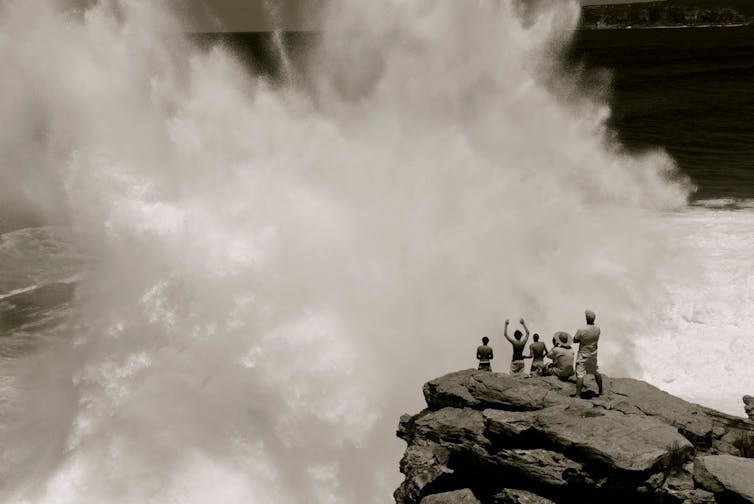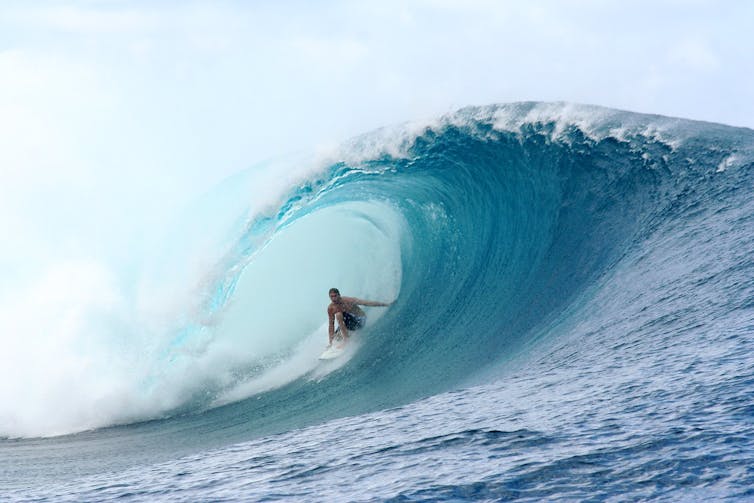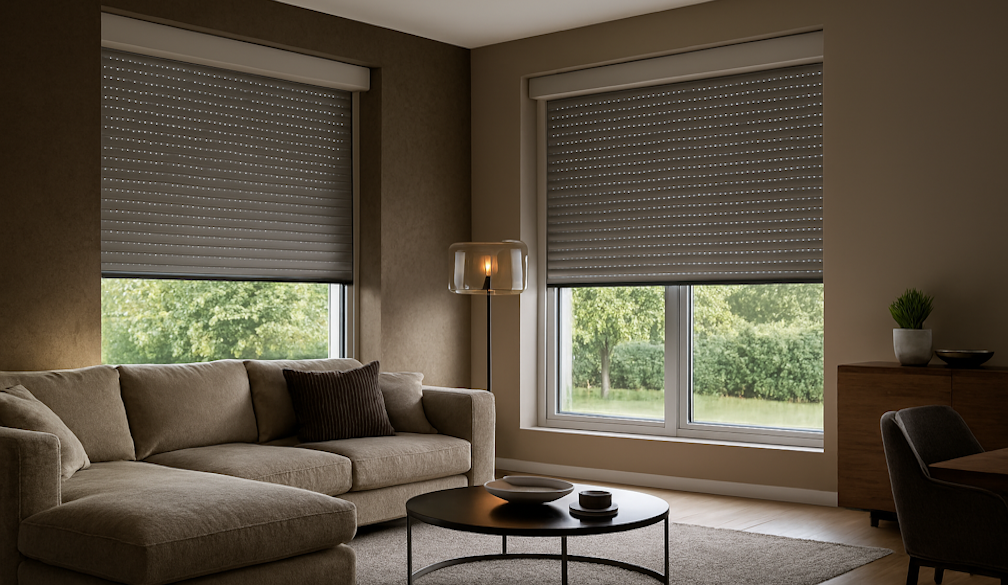Curious Kids: why are there waves?
- Written by Mark Hemer, Senior Research Scientist, Oceans and Atmosphere, CSIRO
Curious Kids is a series for children. If you have a question you’d like an expert to answer, send it to curiouskids@theconversation.edu.au You might also like the podcast Imagine This, a co-production between ABC KIDS listen and The Conversation, based on Curious Kids.
Why are there waves? - Evie, age 5.
Thanks for a great question, Evie.
When you look at the waves breaking at the beach, those waves might be at the end of a long journey. The waves might have been created thousands of kilometres away, or they could have been created near you.
There are lots of types of waves in the ocean, but the waves you usually see at a beach are created by the wind. When the wind blows over a smooth ocean, it creates little waves or ripples on the surface. If the wind continues to blow, the waves grow bigger.
 A big wave lands at Dee Why Beach in Sydney.
Taro Taylor/Flickr, CC BY
A big wave lands at Dee Why Beach in Sydney.
Taro Taylor/Flickr, CC BY
Read more: Curious Kids: How does the Moon, being so far away, affect the tides on Earth?
Faster, bigger, longer
The faster the wind blows (like in a strong storm out at sea), the bigger the waves will grow.
The further the wind blows (or the bigger the area of the storm), the bigger the waves will grow.
And the longer the wind blows (like in a storm that lasts a long time), the bigger the waves will grow.
If the wind stops, or changes direction, the waves will stop growing, but they won’t stop travelling.
They will keep travelling away from where they were created in a straight line, sometimes for days, until they run into something like a beach where they are stopped because they break. That’s why there are still waves at the beach, even when it is not windy.
Waves trip over themselves
Imagine you were running really quickly. But then suddenly, you ran into thick gloopy mud. Your feet would slow down, but the top half of your body would still be going fast. You’d trip over.
Waves do the same thing and that is when they break.
As waves approach the shore, the water is shallower, and the bottom of the wave starts to feel the sand and rocks and seaweed. The bottom of the wave slows down, and soon, the top of the wave is going faster than the bottom part of the wave, so the top spills forward and topples over in a big splash.
 This wave is breaking over the top of the surfer because the top half of the wave is travelling faster than the bottom half.
Flickr/Duncan Rawlinson - Duncan.co - @thelastminute, CC BY
This wave is breaking over the top of the surfer because the top half of the wave is travelling faster than the bottom half.
Flickr/Duncan Rawlinson - Duncan.co - @thelastminute, CC BY
Waves can travel a long way
Scientists who study the ocean (called oceanographers) have measured waves created in the Southern Ocean, and seen them travel all the way across the Pacific Ocean and break on the beaches of North America more than a week later.
Try counting the seconds between waves breaking on the beach. If the time between waves is 10 seconds or more, the waves have come from a long way away. If the waves were created nearby, the time between waves will be short, perhaps five seconds or fewer.
Sometimes when we look at the sea we might see different waves (some big, some small) all happening at the same time. These waves were created at different places, perhaps by different storms, but ended up in the same spot at the same time.
Freak waves
During big storms, waves can get very big. If big waves from two different storms meet together, that can create enormous waves that we call “freak waves”. The largest waves measured are around 25 metres high (that’s five giraffes standing on top of each other!) and they can tip over ships.
Read more: Curious Kids: How do plastic bags harm our environment and sea life?
Hello, curious kids! Have you got a question you’d like an expert to answer? Ask an adult to send your question to curiouskids@theconversation.edu.au
 CC BY-ND
Please tell us your name, age and which city you live in. We won’t be able to answer every question but we will do our best.
CC BY-ND
Please tell us your name, age and which city you live in. We won’t be able to answer every question but we will do our best.
Authors: Mark Hemer, Senior Research Scientist, Oceans and Atmosphere, CSIRO
Read more http://theconversation.com/curious-kids-why-are-there-waves-112015



















